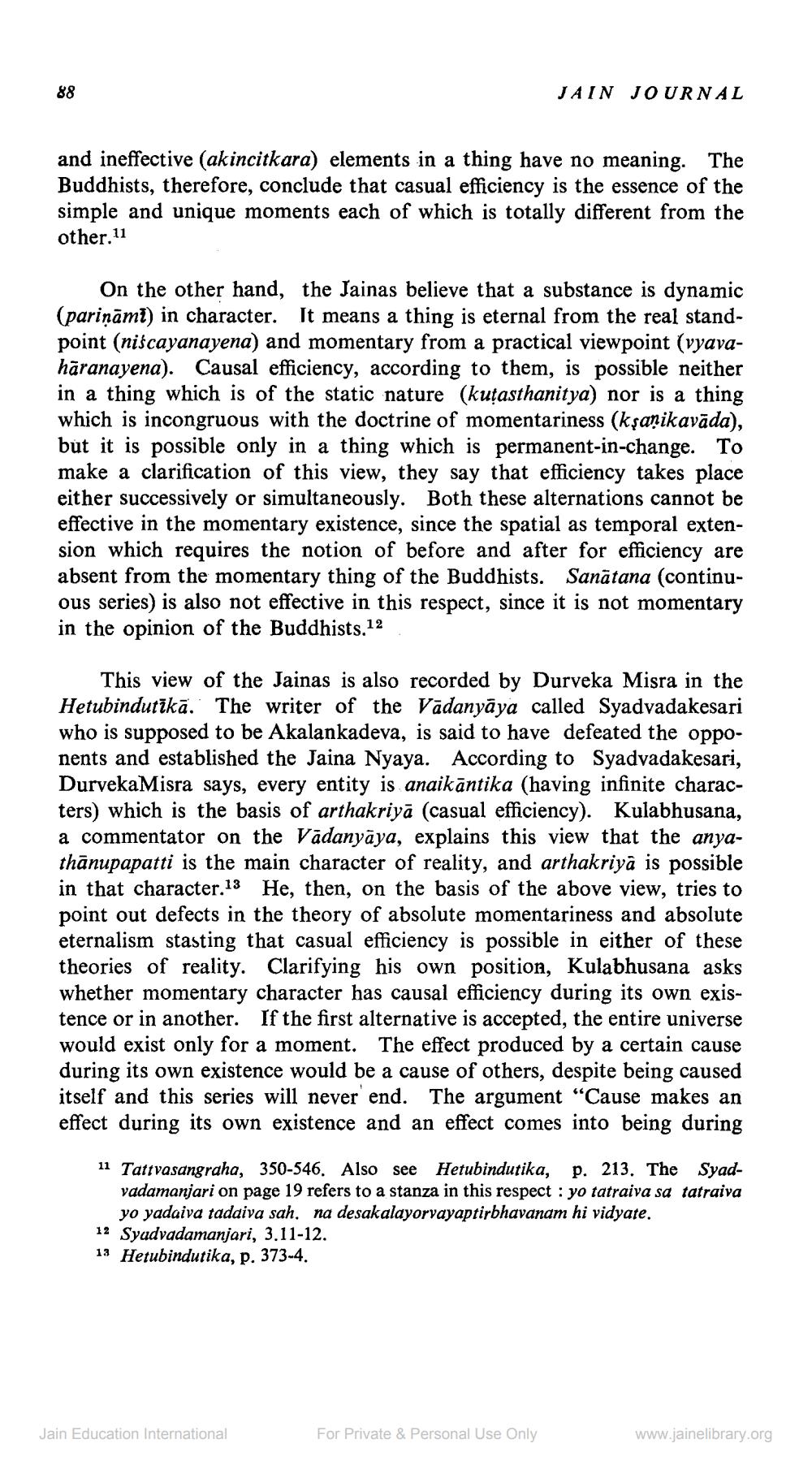________________
JAIN JOURNAL
and ineffective (akincitkara) elements in a thing have no meaning. The Buddhists, therefore, conclude that casual efficiency is the essence of the simple and unique moments each of which is totally different from the other. 11
On the other hand, the Jainas believe that a substance is dynamic (pariņāmi) in character. It means a thing is eternal from the real standpoint (niscayanayena) and momentary from a practical viewpoint (vyavahāranayena). Causal efficiency, according to them, is possible neither in a thing which is of the static nature (kuțasthanitya) nor is a thing which is incongruous with the doctrine of momentariness (kşaạikavāda), but it is possible only in a thing which is permanent-in-change. To make a clarification of this view, they say that efficiency takes place either successively or simultaneously. Both these alternations cannot be effective in the momentary existence, since the spatial as tem sion which requires the notion of before and after for efficiency are absent from the momentary thing of the Buddhists. Sanātana (continuous series) is also not effective in this respect, since it is not momentary in the opinion of the Buddhists,12
This view of the Jainas is also recorded by Durveka Misra in the Hetubindutīkā. The writer of the Vādanyāya called Syadvadakesari who is supposed to be Akalankadeva, is said to have defeated the opponents and established the Jaina Nyaya. According to Syadyadakesari, Durveka Misra says, every entity is anaikāntika (having infinite characters) which is the basis of arthakriyā (casual efficiency). Kulabhusana, a commentator on the Vādanyāya, explains this view that the anyathānupapatti is the main character of reality, and arthakriya is possible in that character.13 He, then, on the basis of the above view, tries to point out defects in the theory of absolute momentariness and absolute eternalism stasting that casual efficiency is possible in either of these theories of reality. Clarifying his own position, Kulabhusana asks whether momentary character has causal efficiency during its own existence or in another. If the first alternative is accepted, the entire universe would exist only for a moment. The effect produced by a certain cause during its own existence would be a cause of others, despite being caused itself and this series will never end. The argument “Cause makes an
ng its own existence and an effect comes into being during
11 Tattvasangraha, 350-546. Also see Hetubindutika, p. 213. The Syad
vadamanjari on page 19 refers to a stanza in this respect : yo tatraiva sa tatraiva
yo yadaiva tadaiva sah, na desakalayorvayaptirbhavanam hi vidyate. 12 Syadvadamanjari, 3.11-12. 13 Hetubindutika, p. 373-4.
Jain Education International
For Private & Personal Use Only
www.jainelibrary.org




